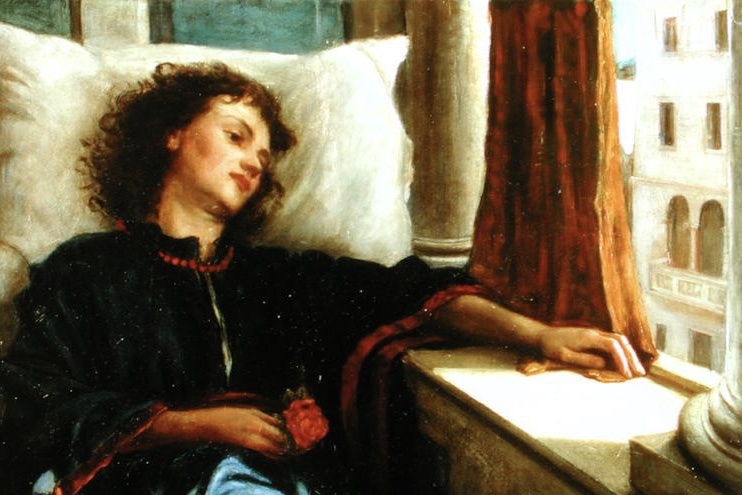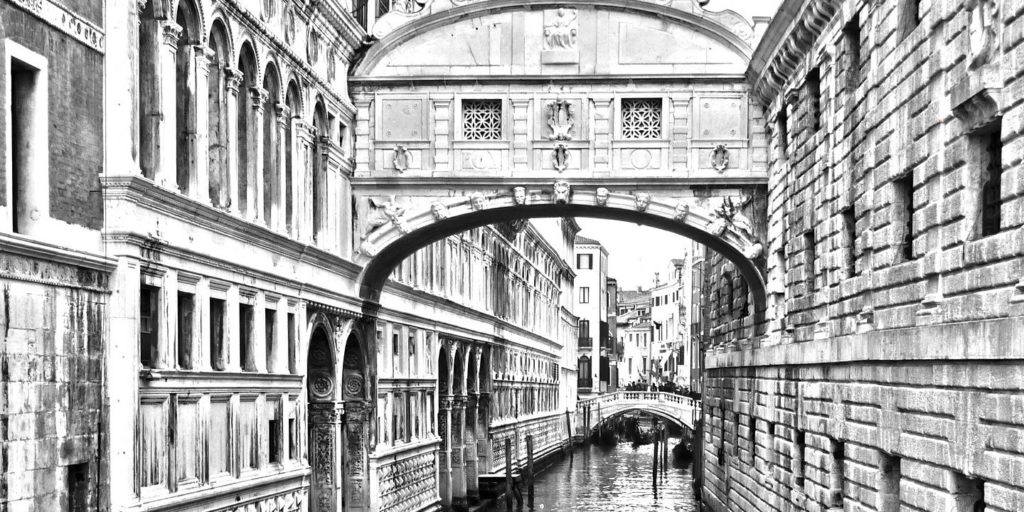It’s common these days when teaching texts like Ovid’s Metamorphoses to append a cautionary red-flag to the reading – something akin to ‘Trigger Warning: Some college students may find Ovid disturbing, given his ancient Roman gods’ proclivities for stalking and sexual assault.’ (The reasons for such a warning are no doubt obvious.)
Had you told me, though, that I’d be adding another caveat to one of my spring 2020 semester’s readings, this one to Boccaccio’s Decameron, I probably would have debated your sanity or, at the least, laughed. The Decameron is a fourteenth-century compendium of ribald tales, after all – the sort to which literature anthologies, when excerpting a select few, append wickedly apt titles like ‘A Jew Converts to Christianity’ and ‘Nuns in Heat.’
Nevertheless, there I was, two weeks into our nation’s impromptu shift to remote instruction, adding the following to the students’ reading assignment:
TRIGGER WARNING. Some of what is at the outset of the Decameron you may find upsetting in light of the Coronavirus.
That’s because Boccaccio opens the Decameron with a proto-ethnography of what happened when Italy was swept into the maelstrom of the Black Death. In fact, in advance of addressing how students responded to that prelude, let me provide for those who haven’t read the book some helpful context – along with a trigger warning: it really can echo our current Coronavirus times in unsettling ways.
The medieval pestilence ‘had originated some years earlier in the East,’ Boccaccio recounts, ‘where it had claimed countless lives before it unhappily spread westward, growing in strength as it swept relentlessly on from one place to the next.’ Once it struck, the symptoms were impossible to miss: egg-shaped swellings known as buboes (hence, bubonic) and dark blotches crawling up the limbs, compounded by chills, fever, and tissue bleeding out. As to its means of transfer, that remained a mystery, with even the powers of medicine proving ‘profitless or unavailing.’ Death came swiftly: sometimes in 3 days.
Boccaccio is (apologetically) unabashed in describing the ugly aura that potential infection induces. He even mined medical tracts to augment his opening’s tenor of bleak authenticity. And then there are the social details: how the Florentines barricaded themselves behind walls and locked doors; how, while some believed modesty of indulgence or abstemious living might save them, others turned sybaritic – drinking hard, partying hard, and generally gratifying their sensual cravings.
Sound familiar?
At least today we have not reached the point where ‘man’s law’ – let alone God’s law – has been altogether crushed. Yes, our economy may be as volatile as a bad EKG but we have not had to witness brothers abandoning brothers; or parents, their children. We, more likely, are residing with them, tussling for the remote or the iPad for screen time, or for that last morsel of takeout, while collectively appareled in sweats and fuzzy socks.
Of course, that scenario only applies to those of us financially privileged enough to afford wirelessly tuning out or ordering in because we haven’t yet lost our jobs. As Boccaccio reminds us, if there was a particularly ‘pathetic spectacle’ in the damage done by the Black Death, it comprised the poor, the disadvantaged, the homeless, most of whom simply ‘dropped dead in the open streets…’ But that didn’t cause anyone to rise up in socio-economic protest (that would come later). So wrecked by ‘the scale of the calamity’ were the medieval Florentines that they pretty much regarded it ‘with indifference.’ Corpses of every estate were abandoned in the streets for pick-up and mass burial – and without the essential sacramental rites.
So, how possibly does Boccaccio brighten this blighted equation?
For one, he puts his forthcoming tales into the mouths of ten youthful nobles (7 women, 3 men), who, upon meeting up in a church, decide to abandon their infected city for a countryside villa. They will – yes, you’ve got it – retreat into the hills as a form of social distancing.
Luckily for these nobles, their self-sequestration takes place in really posh digs, including richly painted sleeping apartments, ‘delectable meadows’ in which to frolic, and a good provision of ‘daintily prepared’ dishes and ‘precious wines.’ While that may sound idyllic and just a tad entitled (in the 100s of pages, there’s only one mention of the servants attending to their needs), Boccaccio’s ladies justify their escape as a ‘natural right’ befitting times of duress.
To pass the time during their 10-day confinement, these 10 mid-millennials devise a game: Each noble must each day tell a story more entertaining and delightful than the last. And, so, the origins of Boccaccio’s title Decameron: 10 stories told over the course of deka– (ten) –hemera (a day).
But here’s the rub: Most everything in the Decameron – the social distancing, the nobles, their narrative game-playing – is all-out fiction. Well, minus those posh villas (some of which still bedeck that Tuscan hill); and of course the fact that there was a pestilence, a disastrous socially upending calamity of suffering the likes of which had never been experienced before.
But how, still, to explain that Boccaccio starts the Decameron with an opening so tonally inharmonious with the comically coarse stories that follow? It’s a bit like commencing an episode of Friends with a somber, macabre scene from The Exorcist.
Part of the answer may lie in his concerted attempts to fashion his text as a human comedy, in intentional contrast to his predecessor Dante’s Divine Comedy, with its Christian tour of Inferno, Purgatory, and Paradise. In this sense, we might read the Decameron’s ‘painful memory of the deadly havoc wrought by the recent plague’ – the words are Boccaccio’s – as a kind of mini-Inferno through which we must pass before we can reach that earthly garden overlooking Florence. Boccaccio pretty much says so himself: ‘You will be affected no differently by this grim beginning than walkers confronted by a steep and rugged hill, beyond which there lies a beautiful and delectable plain.’
Okay, but how would this moment’s college students react – which is to say, humanities freshmen like my own who were now in the throes of remote learning due to the ongoing Coronavirus pandemic? Would they find the grimness of Boccaccio’s opening too grim, too much of a not-distant-enough existential climb? And not existential in some remote way either, given that our media have not been shy about drawing likenesses between Covid-19 and the Black Death. We’ve all seen the articles that compared Boccaccio’s Italy to that ravaged by the novel coronavirus, and President Trump explicitly using the word plague to describe the pandemic; and back in March, Time labeled our times ‘The Age of Anxiety’ – no doubt in response to medical pathologies that generate psychological ones.
Well, here’s the strange and revealing thing when it comes to how we cope. Because when students read Boccaccio’s account of the Black Death, as well as a few of those nobles’ entertaining tales (which, by the way, sardonically skewer the religious and political ‘scruples’ of Boccaccio’s day as if they were puff pastry), they did not come out of that experience more anxious or fraught, let alone with any sort of trauma triggered.
That’s not to say they couldn’t see some scary analogies to our Coronavirus times:
I feel like just a few weeks ago, the ways citizens responded to the plague and laws put forth by the governments therein would have seemed absurd and foreign to me but now seem, quite scarily, to echo the ensuing battle between social isolationists and the rampant spring-breakers/coronavirus-deniers.
And another:
Boccaccio explains the ways that society changed as a result of the plague, and that certainly makes you wonder the ways in which our society will be changed as a result of this pandemic for the years to come.
Suddenly the Black Death was no longer conceived as some hermetically contained unit, like a chapter in a history book mercifully, if mythically, excised from its infection of the Renaissance. Already students could sense the way a pandemic has the capacity both to ramify and to bleed socially and economically into the decades to come.
Even when acknowledging that the plague might be something of a narrative stratagem for Boccaccio – a convenient way for him to confine 10 people in a setting where his tale-telling canvas could be unfurled (and, perhaps, morally justify his indulging in coarse tales) – students gleaned something more empathically essential about that frame:
Boccaccio … needed a plot device to keep these ten individuals in this [setting] for ten days, but a lengthy storm would've worked just as well. He chose the plague, something that adds a sense of tension, a sense of urgency, a sense of danger to the overall story. … This kind of opening reminds people of the presence of death and how easily it could come, thereby giving a new sense of appreciation to the little things like the ‘regulated pleasures’ that are … the [stories in the] Decameron.
While ‘regulated pleasures’ may be the more academic way of referring to what Boccaccio’s stories provide, its currency originates with the author himself. One of the Decameron’s ladies entreats, after all, that their tales refrain from ‘overstepping the bounds of what is reasonable.’ (If you’re hungry for a modern equivalent, consider the hours we spend indulging in reprobrate characters on film and TV: criminals, drug lords, sex addicts, terrorists, renegades, Nazis, and serial killers. How is our pleasure in their crimes and misdemeanors judiciously regulated? Why, by those villains conveniently getting their comeuppance in the end.)
On the other hand, there are a lot of narrative cracks and fissures in Boccaccio’s storytelling, some quite intentional, such as listeners who interpretively disagree with each other, indisputably opening up space for alternative readings, in terms of both the characters’ and Boccaccio’s motivations. In other words, events in the Decameron are not always so reasonably bound or morally sealed off.
So, let’s consider some of the paradoxes here: We’ve got both reasonability and the impossibility of holding firm to reasonability; we’ve got the necessity of climbing out of a pestilent earth in order to reach an earthly Eden; we’ve got social fleeing for the ironic sake of social communion…
And aren’t those exactly the sorts of situations in which we find ourselves now?
The truth is that while we all may be existentially tethered to CNN, or Fox News, or some other news source’s endless spate of Coronavirus updates, we are also simultaneously burrowing our way into binges of escapist, comforting, and, yes, even comfortably conforming entertainment: James Bond, sit-coms, cooking shows, anime, Animal Planet, Tiger King. Of course, there’s also been an uptick of people screening films like Contagion and Pandemic or, even more tellingly, documentaries on the Spanish flu. If anything, this speaks to the contradictory responses we may have to – let’s face it – our precedented plight. And it is for these reasons precisely that students found a level of meaningful, if not quite cozy, connection with Boccaccio:
I found the reading oddly comforting in that it lessened the shocking and unpredictable nature of our current scenario. By reading, I was comforted knowing that other generations have experienced the same situation and reacted in virtually the same ways.
Okay, well, not quite the same situation (one third to one half of western Europe succumbed to the Black Death), but certainly shared in the reactive sense. It’s also an awareness exponentially aided, in our time, by the 24-7 global sweep of the Internet and cable TV.
Granted, I’m relying on a pretty small sample size here, one anecdotal at best. On the other hand, wisdom only requires a sample size of one. Perhaps most shrewd was a student’s insight that Boccaccio’s isn’t a tragedy; that he is, rather, an author in humanistic fisticuffs with biological calamity, and determined to buoy us up through shared storytelling:
[I]t is not a pandemic tragedy. This isn't about how the illness is ravaging their families and lives, tearing through their country and leaving it wrecked like a ship in a storm, although that is a part of it. It's a story (or collection of) about people coming together to comfort each other in a time of great ordeals. When a great many people are faced with a challenge, or a tragedy, we band together. We lift each other up.
Get the best of Moxy directly in your inbox.
How many of us today have partaken in a modern equivalent of rejecting our ‘pandemic tragedy’ even as we may feel ensconced in it? Just think of all the song parodies going around, with pop lyrics now morphed into mirthful strains about the travails of endless hand washing or self-isolation. Consider – as my sample size of one – Chris Mann’s parody of ‘Hello [from the Inside],’ by Adele. ‘Hello from Corona Life,’ Mann croons through the window of his domestic prison, ‘I’ve FaceTime called a thousand times….’ And just try to count how many Covid-19 memes you’ve scrolled through these past few months – including illustrations of seventeenth-century plague doctors wearing gothic beak-masks to avoid airborne infection.
It’s as if sanity exists somewhere between the domains of the real and the ridiculed; is a balancing act between the traumas that distress us (often privately, as in our nightmares and unspoken thoughts) and the pleasures that de-stress us (through their being enthusiastically shared – whether as talk or text, as applauded when in person or liked or emoji-ed when online). It’s a parasitic virus fought via entertainment gone viral.
It’s also certainly safe now to say that the Coronavirus will become the next generation’s go-to frame for that Florentine frame tale – something akin to a more subdued and de-politicized version of ‘Remember the Alamo.’ When ultimately students return en masse to college classrooms to dissect the Decameron, they will do so with ‘Remember the Coronavirus’ in the forefront of their minds. So, too, with other works: Edgar Allan Poe’s ‘The Masque of the Red Death’ will jump off the page in a way it hasn’t for a century, and Daniel Defoe’s A Journal of a Plague Year may no longer sound so ‘back in the day.’ The past and present will be constellated in new, unanticipated ways.
In fact, it’s likely that, for the next decade or so, students will spot with heightened awareness the language of contagion that creatively ‘infects’ so much literature. No longer will they dismiss as crude background noise the syphilitic tropes that permeate Shakespeare’s oeuvre. When confronted with the Bard’s repeated referrals to that STD as the ‘French pox,’ and the ‘Spanish pox,’ and the ‘Naples disease,’ want to bet they will now draw parallels with the politically charged (and potentially xenophobic) references in their own time to Covid-19 as the ‘Chinese disease’? And will the first descriptor that comes to their minds upon reading Albert Camus’s cholera-inspired The Plague not be ‘existential’ or ‘absurd,’ but ‘prescient’ and ‘relatable’? And no longer will they rely on parental recollections of an earlier age of anxiety’s AIDS epidemic, which Tony Kushner so achingly depicts in his play Angels in America. ‘Remember the Coronavirus,’ they will say.
If the past can only be read through our present, we’ve been given a strange one, however much we would have preferred not to have been invited to this dance.
Maybe we need a more broad-based caveat in our humanities syllabi:
TRIGGER WARNING: Everything old is new again – and everything new, once again old.





